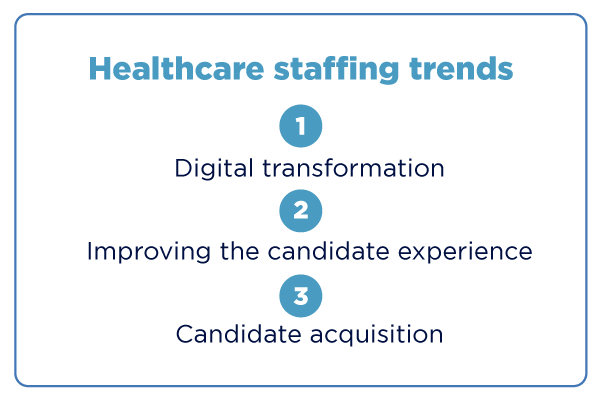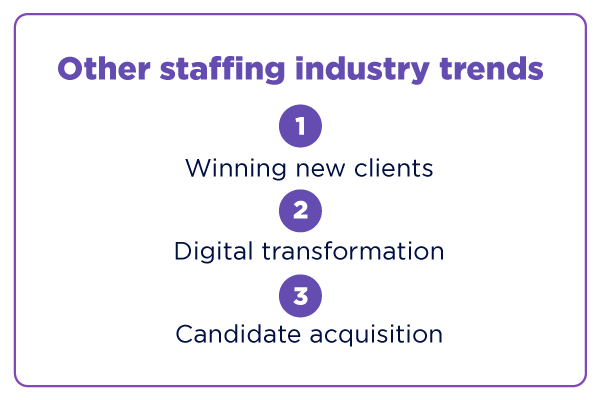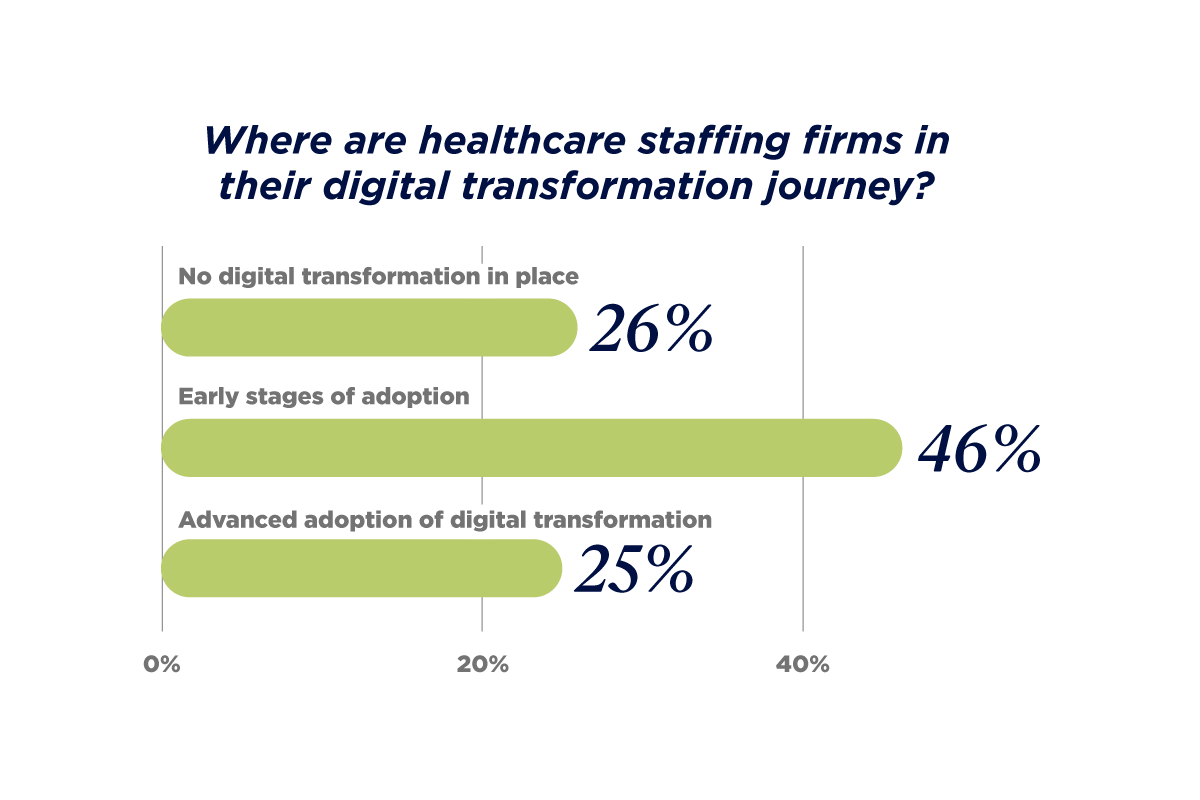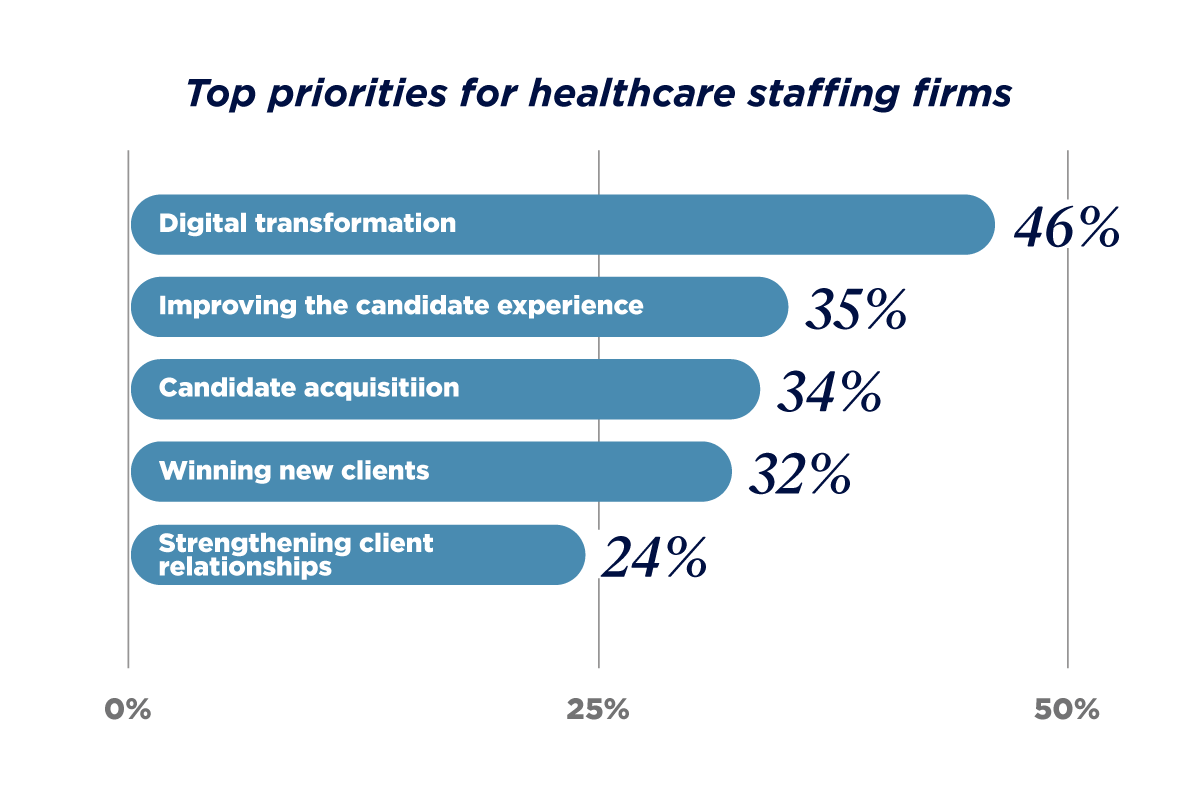
Healthcare staffing firms are prioritizing digital transformation in 2023
Almost half of the healthcare respondents report that digital transformation is their biggest priority this year, but that doesn’t mean candidates aren’t a focus. The other two top priorities for healthcare staffing firms in 2023 are candidate-centric, emphasizing candidate experience and acquisition.
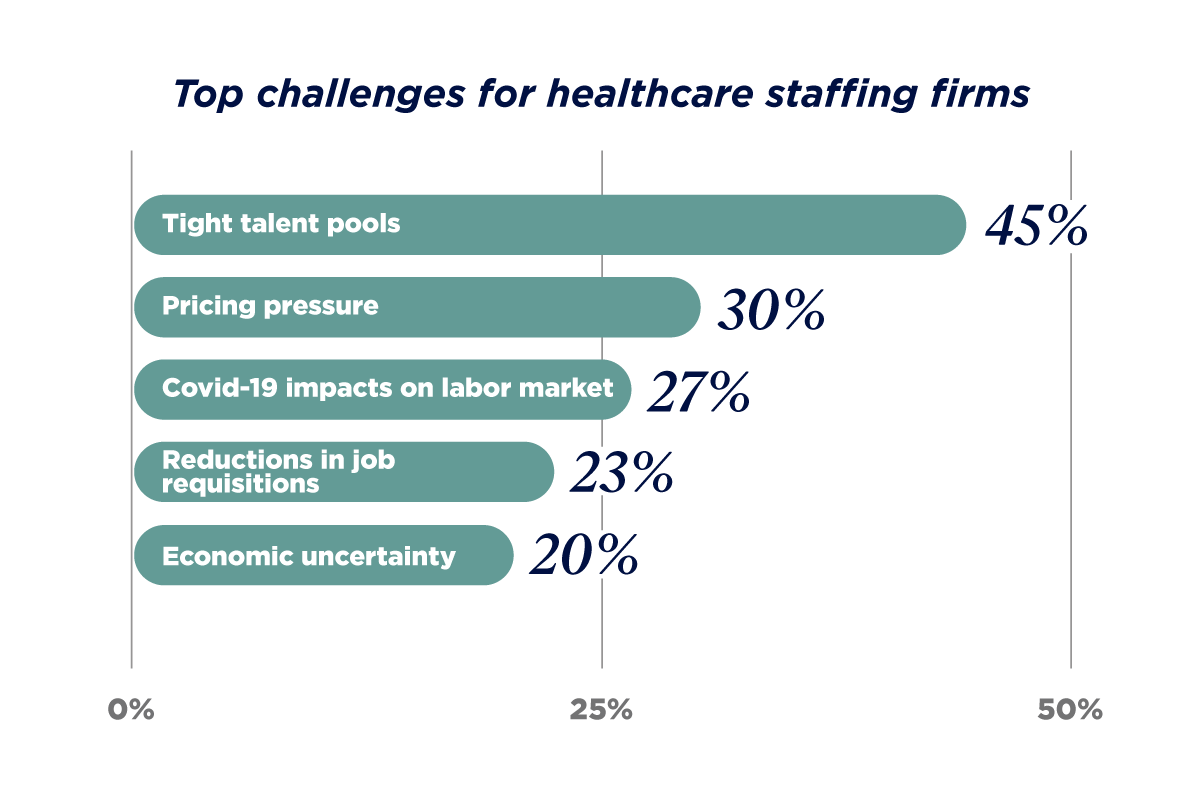
Tight talent pools present a challenge throughout healthcare staffing
While the top priorities differed a bit between healthcare staffing firms and the rest of the industry, healthcare firms and their staffing industry peers face a common challenge in 2023: tight talent pools.
It is clear that all staffing firms will need to embrace technology and digital transformation to attract and retain top talent. This will also enable their recruiters to provide a seamless and excellent experience.
Despite the focus on tight talent pools, healthcare firms are still faced with pricing pressure and the ongoing impacts of the COVID-19 pandemic. It’s no secret that healthcare firms were heavily impacted by the pandemic, evidenced by healthcare firms reporting those lasting impacts as a top challenge this year while the rest of the industry focuses on general economic uncertainty and named COVID-19 impacts as their fifth top challenge.
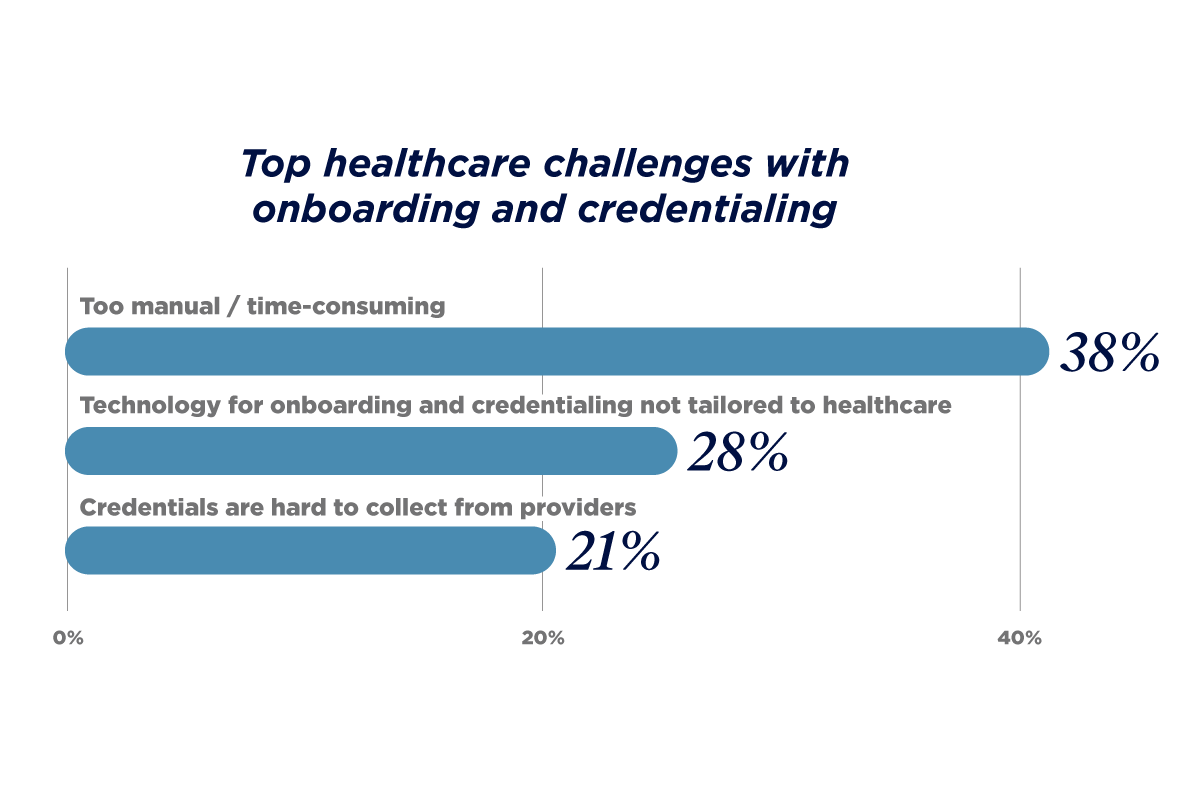
Digital transformation
Over one-third of respondents report that the onboarding and credentialing process is too time-consuming, and many also say they lack the technology for efficient operations when collecting and maintaining credentials.

